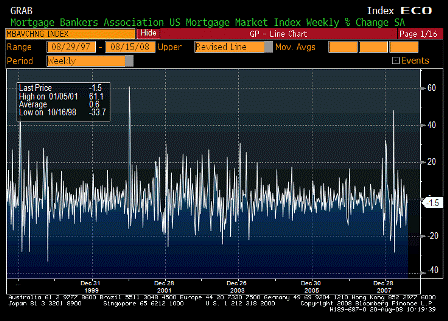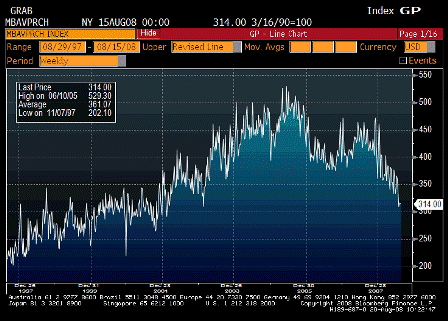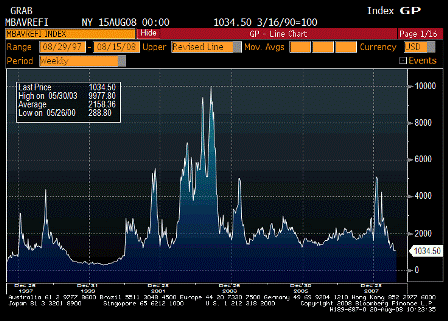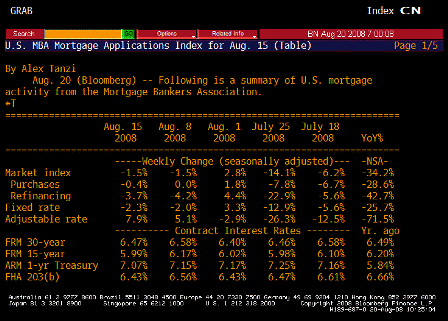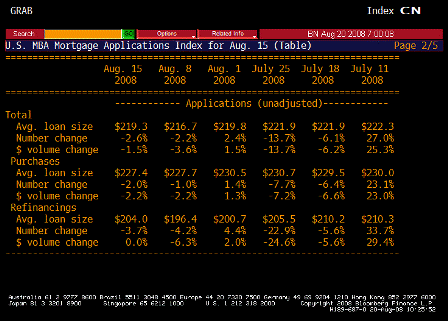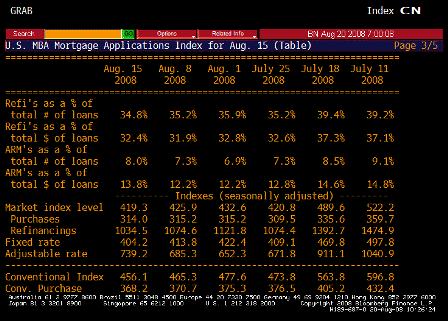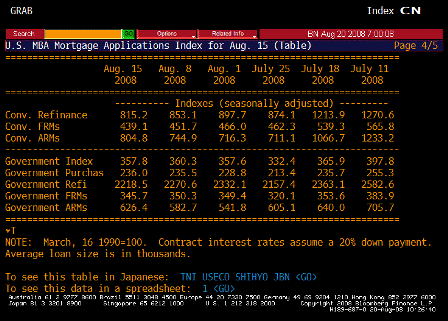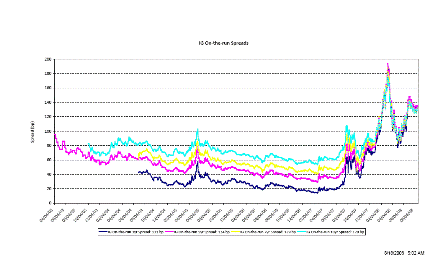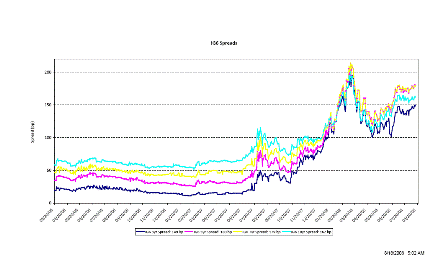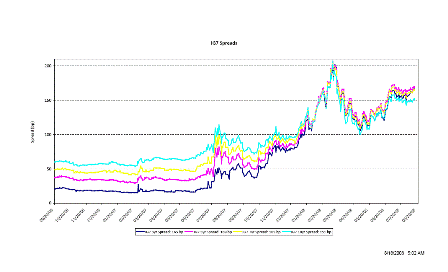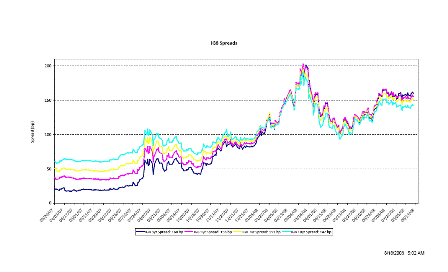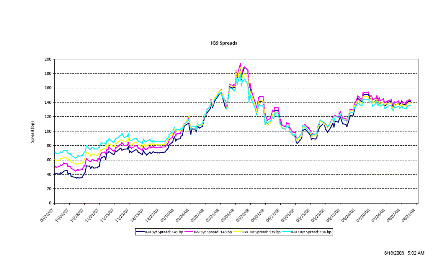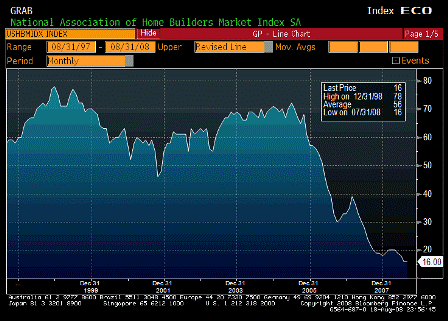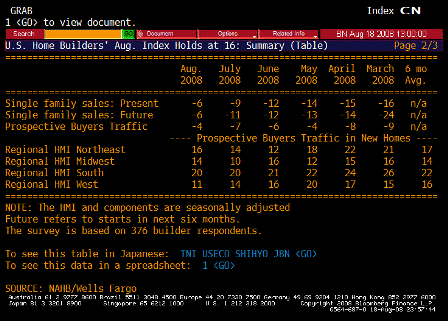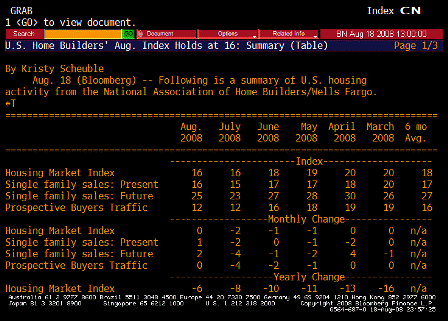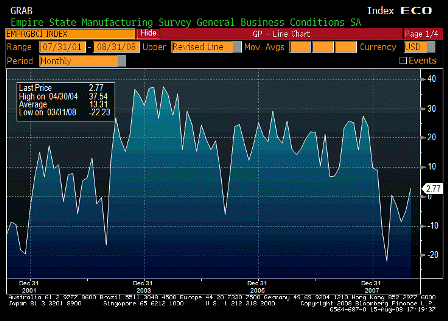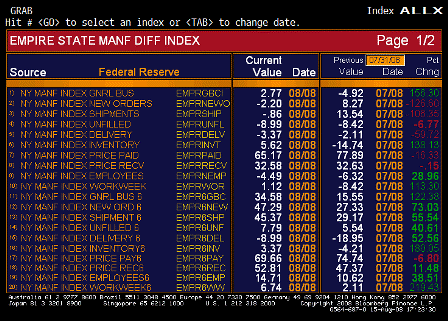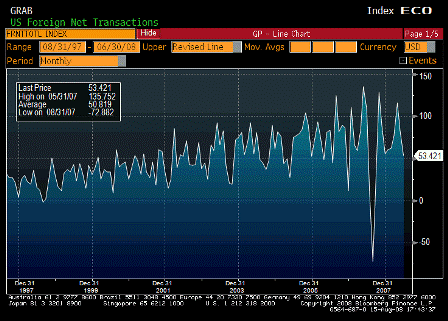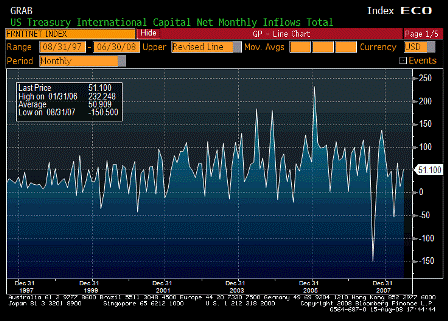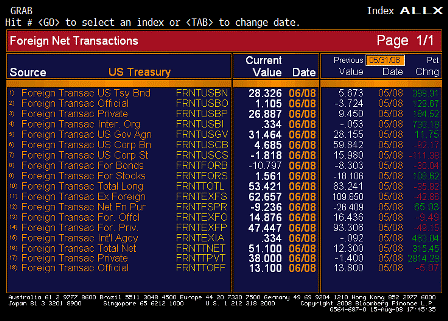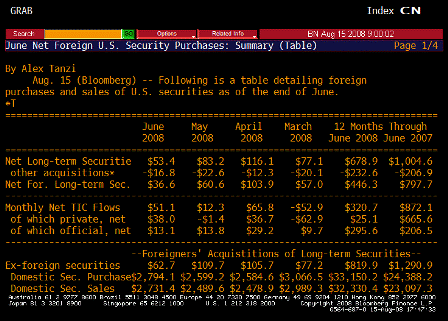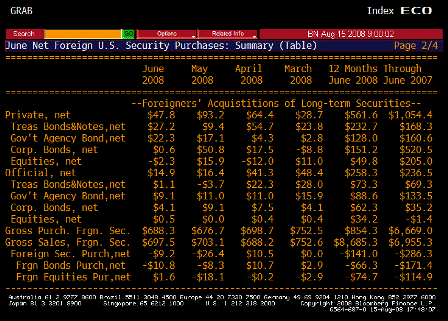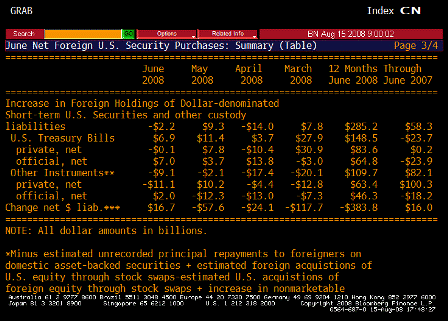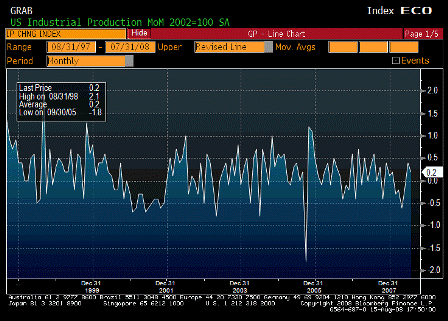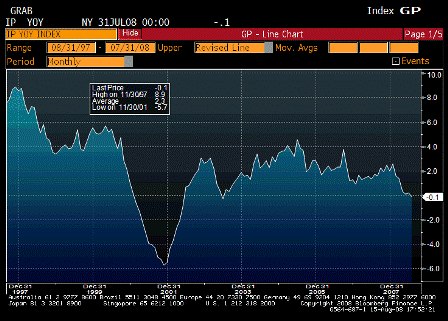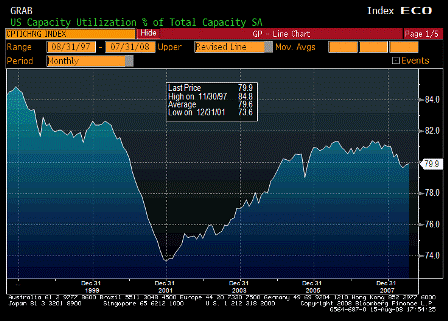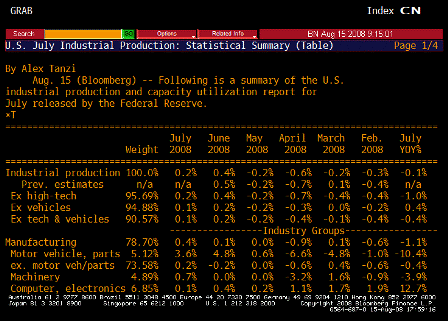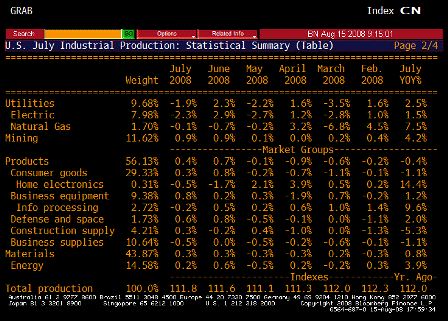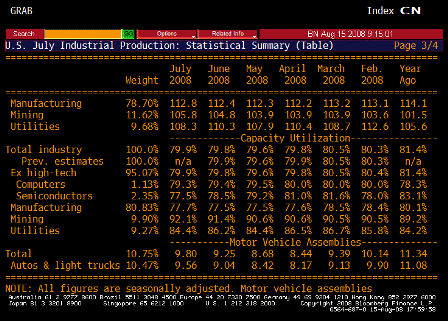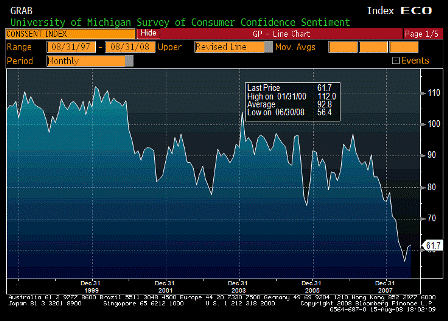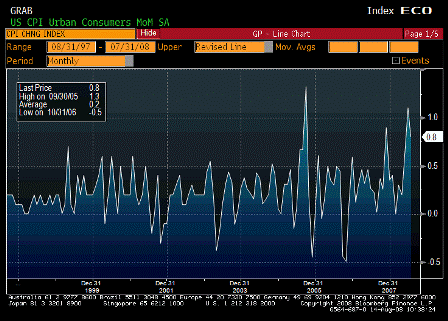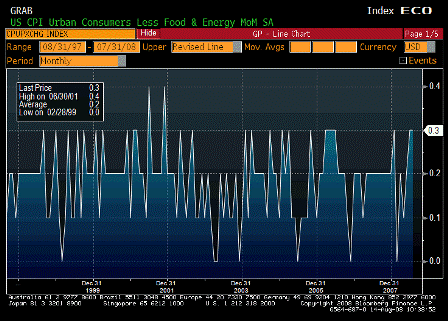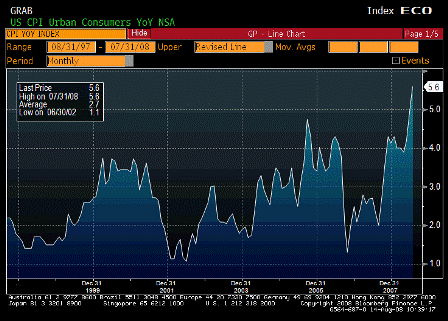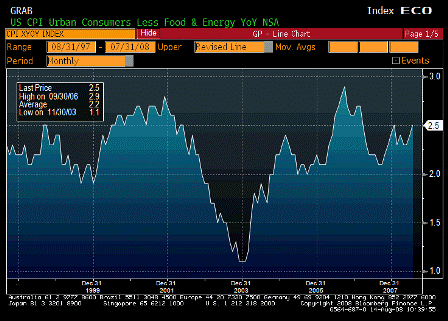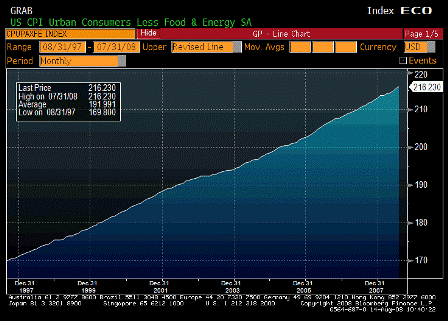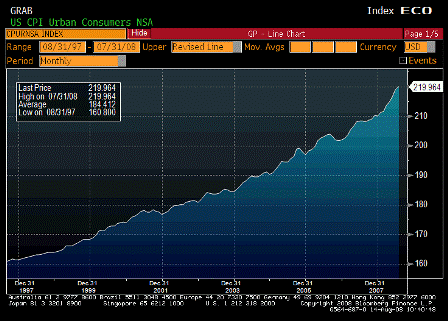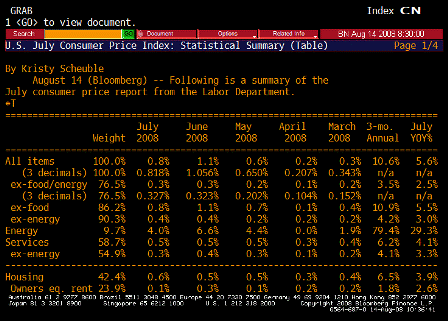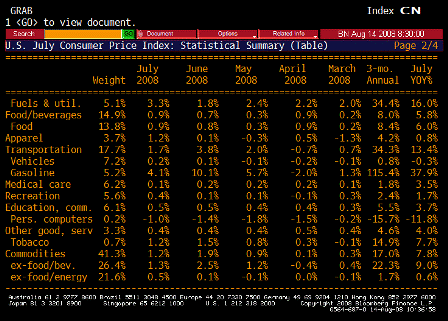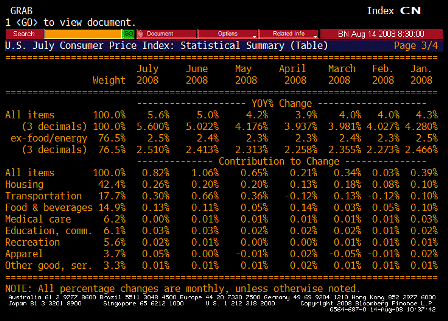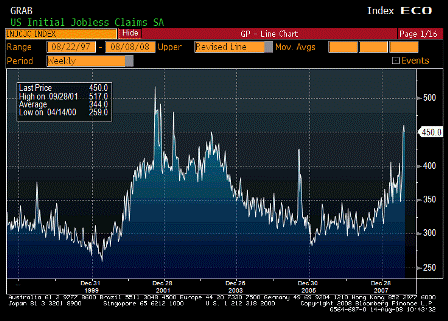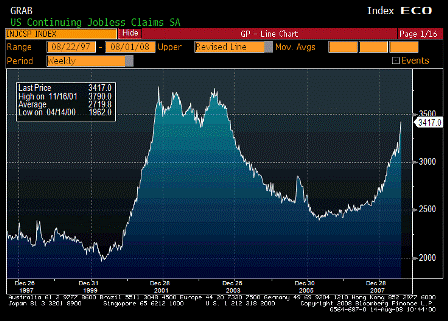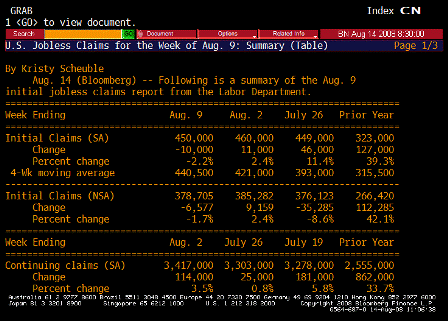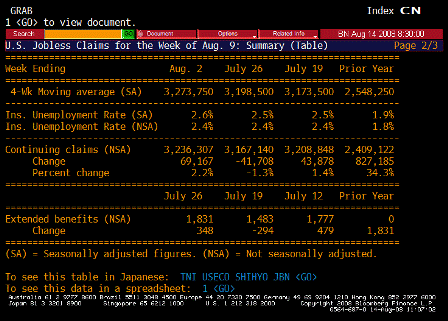[Skip to the end]
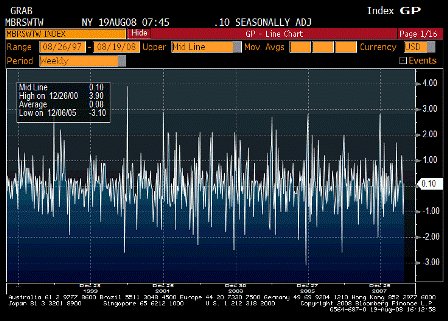


ICSC-UBS Store Sales WoW (Aug 19)
| Survey |
n/a |
| Actual |
0.1% |
| Prior |
1.1% |
| Revised |
n/a |
[top][end]
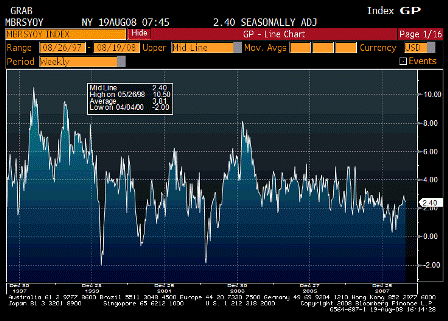


ICSC-UBS Store Sales YoY (Aug 19)
| Survey |
n/a |
| Actual |
2.4% |
| Prior |
2.6% |
| Revised |
n/a |
Doing just fine, especially considering the financial sector is gone.
[top][end]
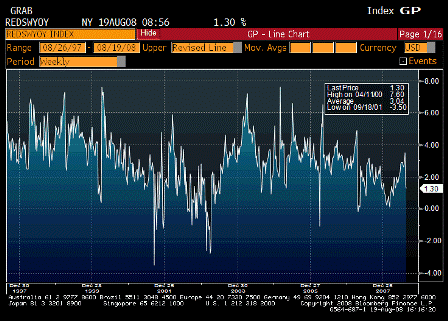


Redbook Store Sales Weekly YoY (Aug 19)
| Survey |
n/a |
| Actual |
1.3% |
| Prior |
1.5% |
| Revised |
n/a |
[top][end]
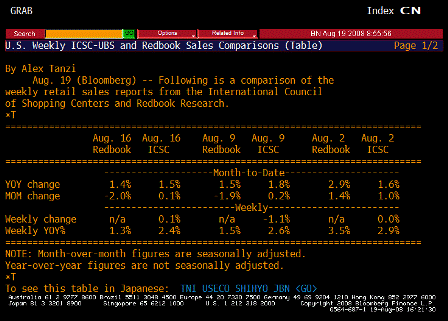

ICSC-UBS Redbook Comparison TABLE (Aug 19)
[top][end]
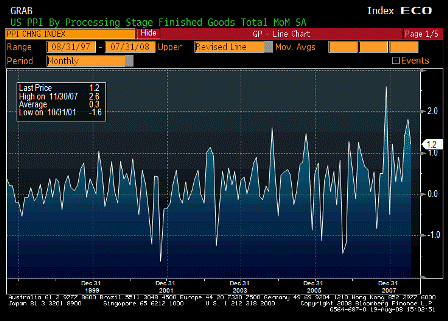


Producer Price Index MoM (Jul)
| Survey |
0.6% |
| Actual |
1.2% |
| Prior |
1.8% |
| Revised |
n/a |
Up more than expected.
[top][end]
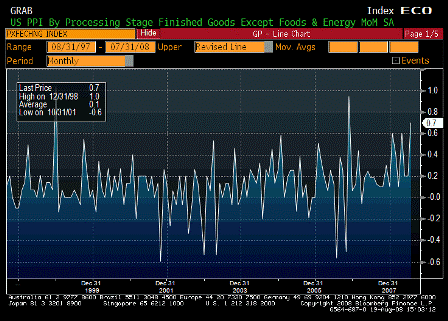


PPI Ex Food & Energy MoM (Jul)
| Survey |
0.2% |
| Actual |
0.7% |
| Prior |
0.2% |
| Revised |
n/a |
Core nudging up a touch…
[top][end]



Producer Price Index YoY (Jul)
| Survey |
9.3% |
| Actual |
9.8% |
| Prior |
9.2% |
| Revised |
n/a |
Just a little blip up that’s starting to make the 1970s look tame.
[top][end]
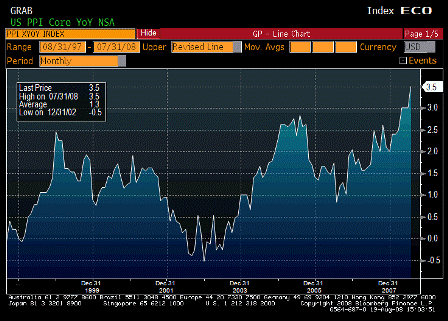


PPI Ex Food & Energy YoY (Jul)
| Survey |
3.2% |
| Actual |
3.5% |
| Prior |
3.0% |
| Revised |
n/a |
Cute little break out here too.
[top][end]
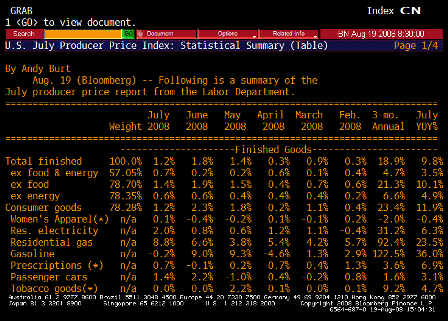


PPI TABLE 1 (Jul)
[top][end]
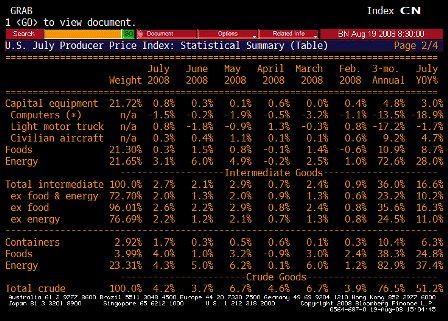


PPI TABLE 2 (Jul)
[top][end]
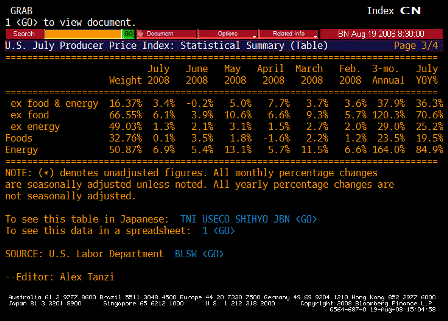


PPI TABLE 3 (Jul)
Karim writes:
- PPI for July up 1.2% and 0.7% ex-food and energy
- Core driven by cars and trucks the past 2mths (seems out of line w/cpi data) and medical
[top][end]
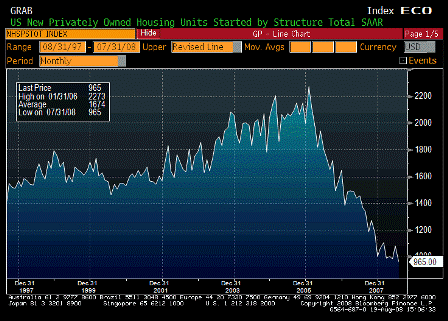


Housing Starts (Jul)
| Survey |
960K |
| Actual |
965K |
| Prior |
1066K |
| Revised |
1084K |
A bit higher than expected, and last month revised up.
Averaging out the last couple of months or so to smooth the NY situation indicates a leveling off and probably a bottom.
[top][end]
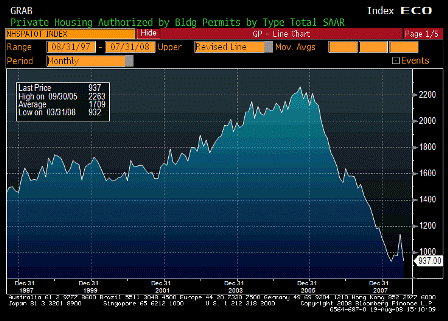


Building Permits (Jul)
| Survey |
970K |
| Actual |
937K |
| Prior |
1091K |
| Revised |
1138K |
Down, but last month revised up. Same as above.
[top][end]
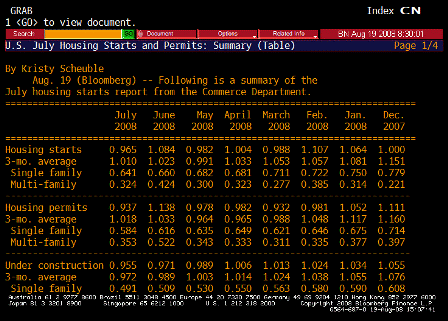


Housing Starts TABLE 1 (Jul)
[top][end]
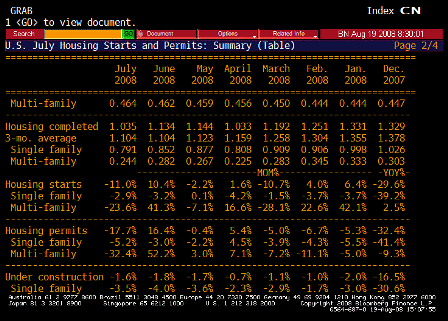


Housing Starts TABLE 2 (Jul)
[top][end]



Housing Starts TABLE 3 (Jul)
Karim writes:
- Starts fall 11% after upward revision to June (now up 10.4%)
- Noise in data still surrounds multi-family due to change in NYC building code (multi-family dropped 23.6% after rising 41.3% in June)
- Single family drops another 2.9% after 3.2% drop in June and now down 39.2% y/y
- Same story with permits, down 17.7% m/m after 16.4% rise in June
- Single family permits down 5.2% m/m after -3% in June and down 41.4% y/y
- Multi-family down 32.4% m/m after up 52.2% m/m in June
[top][end]
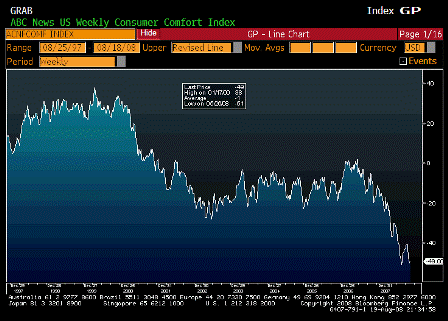


ABC Consumer Confidence (Aug 17)
| Survey |
-50 |
| Actual |
-49 |
| Prior |
-50 |
| Revised |
n/a |
very low, may be bottoming, confidence being hurt by inflation.
[top]
